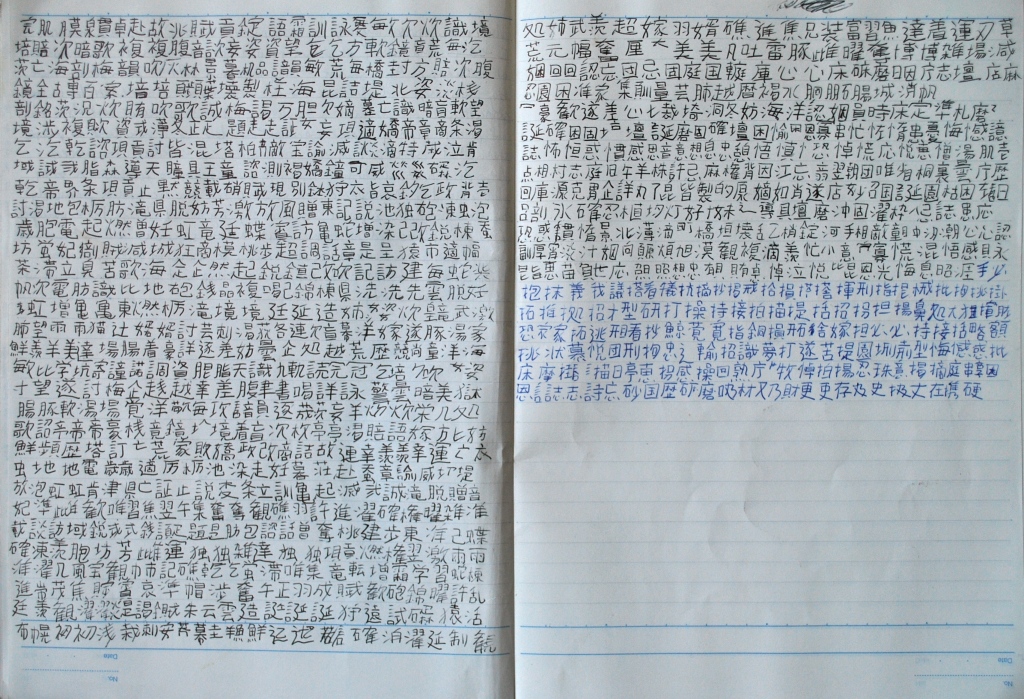Languages need to constantly produce new words in order to keep up with the times. In the last two centuries, as Japan opened itself to the outside world, it has used two very different but equally curious techniques for borrowing foreign sounds to build new words. Today, the first.

The entire system of Japanese characters, here known as kanji, was borrowed from Chinese starting around 500 AD. This happened in two ways. First, characters along with their meaning were taken and assigned to existing Japanese words. Basic nouns and verbs are still written this way: indigenous word, borrowed image. In most cases the meanings still match, allowing Chinese speakers to at least hazard a guess at the meaning of Japanese text without actually knowing what any of the words sound like. The second method was to borrow whole words from Chinese along with their kanji. This was mostly done for new words that didn’t exist in Japanese or for more formal versions of existing words, just as English has taken on extra Latin, Greek, and French words. When this happened, Chinese sounds entered the Japanese language as well.
These two types of borrowing cause a problem: one kanji can be associated with multiple sounds. This is probably the most vexing part of the Japanese writing system. Most kanji have two basic readings, the Japanese reading and the Chinese reading, but in practice characters can indicate ten or more sounds based on different Chinese dialects or related Japanese words. The reader just has to know based on context. The system is unwieldy, but manageable to the native learner. Imagine we have an English kanji for the idea of “water.” It looks like this: 水. Now, I want to make some new words related to water. If I make the words 水-fall or 水-wheel, it is obvious to an English speaker that I am talking about waterfall and waterwheel. But, if I instead make the word 水-rium, then waterium doesn’t make sense. It must be aquarium. 水-power would be hydropower, sub-水 would be submarine, and so forth. The Japanese Kanji system works on the same principle of borrowed stems and roots, but in written form they have all been collapsed onto a single ideograph.
In 1854 four US navy ships steamed into Tokyo Bay to demand the city open itself to foreign trade, setting off an internal political struggle that ended the rule of the shoguns and with it, two centuries of isolation from the outside world. As Japan rapidly modernized, new words were coined daily for objects and concepts that had never been named before. One of my Japanese teachers described scholars literally going through dictionaries of foreign languages to find words that Japan didn’t have yet: economy, train, democracy, electricity, biology, and so on. The new words were made using the existing system of borrowed Chinese sounds. These made better word roots than the indigenous Japanese readings, because Chinese words are usually a single syllable. They made perfect building blocks for long compound words. The result was uniquely Japanese words for Western concepts made out of Chinese roots.

Here is an example everyone knows: rickshaw. These person-pulled carriages first became popular in Tokyo, and the English word is actually a shortened version of the Japanese word jinrikisha, written with the kanji 人力車, literally person – power – car. If you look up any of those words in an English-Japanese dictionary you will find something else entirely: person is hito, power is chikara, and car is kuruma. These words could be strung together into a not so elegant compound: hitochikarakuruma. The compact Chinese readings are more effective. In this case, Chinese uses the same kanji to write rickshaw, but the reading is different, something like ren li che (warning: I know nothing about Chinese). With some imagination, you can probably see that the Japanese sounds are related, although they have clearly been warped by time, translation, and the phonetics of the Japanese language.
Up until the middle of the 20th century, almost all new Japanese words were made using this compound kanji system. It produced some marvelous vocabulary. Japan’s much debated nuclear plants are known as 原子力発電所, original – child – power – departure – electric – place. Gastroenterologist is written 胃腸科専門医, stomach – intestine – department – dedicated – gate – doctor. Chinese has its own words for these concepts, using many but not all of the same kanji, but these terms are uniquely Japanese. The original Chinese sounds have been adjusted and arranged in novel ways that would not be intelligible to a Chinese speaker. I am reminded of the old stereotype of Japan as the great imitators of history. While Japan (like the rest of the world) has soaked up foreign cultures over the centuries, every borrowed technology, idea, and sound has become uniquely Japanese in the process.
TO BE CONTINUED in Borrowed Sounds Pt. 2: Katakana and the cutest versions of English words you have ever heard…